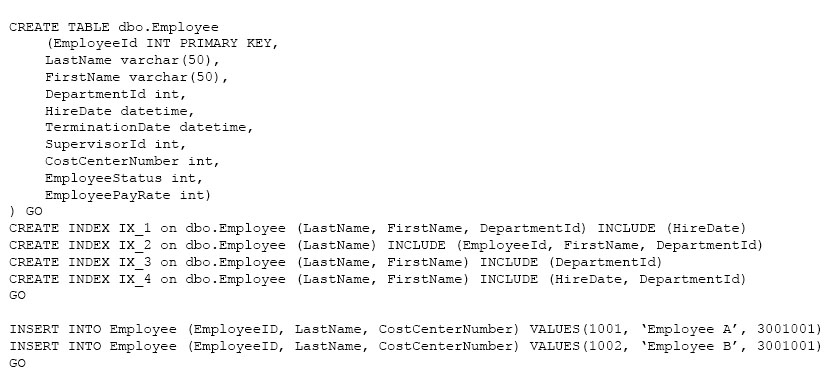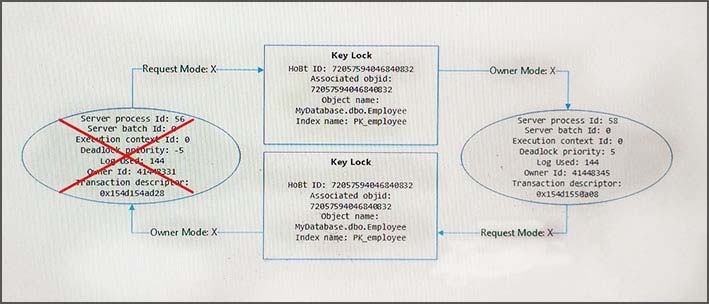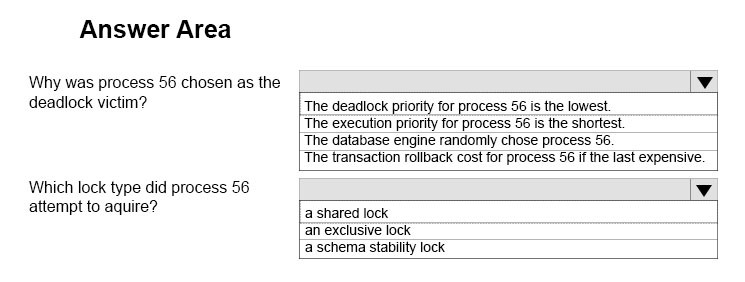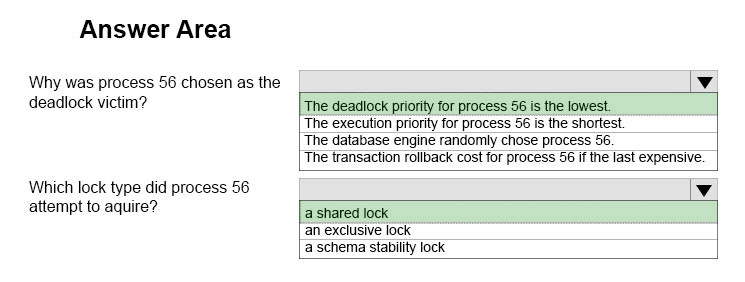

HOTSPOT -
Background -
You have a database named HR1 that includes a table named Employee.
You have several read-only, historical reports that contain regularly changing totals. The reports use multiple queries to estimate payroll expenses. The queries run concurrently. Users report that the payroll estimate reports do not always run. You must monitor the database to identify issues that prevent the reports from running.
You plan to deploy the application to a database server that supports other applications. You must minimize the amount of storage that the database requires.
Employee Table -
You use the following Transact-SQL statements to create, configure, and populate the Employee table:
Application -
You have an application that updates the Employees table. The application calls the following stored procedures simultaneously and asynchronously:
✑ UspA: This stored procedure updates only the EmployeeStatus column.
✑ UspB: This stored procedure updates only the EmployeePayRate column.
The application uses views to control access to data. Views must meet the following requirements:
✑ Allow users access to all columns in the tables that the view accesses.
✑ Restrict updates to only the rows that the view returns.
Exhibit -
You view the Deadlock Graph as shown in the exhibit. (Click the Exhibit tab.)
Use the drop-down menus to select the answer choice that answers each question based on the information presented in the graphic.
NOTE: Each correct selection is worth one point.
Hot Area:

EdwardWang
Highly Voted 5 years, 6 months agoJohnFan
Highly Voted 5 years, 3 months agonewsyk
Most Recent 4 years, 5 months agoNewt
5 years, 1 month agoHeisenberg008
5 years, 4 months ago